1950s
Dome living
I imagine a house like this might be possible to build nowadays, but the monthly electric bill would be a small fortune.

Related post: The Winooski Dome
Posted By: Alex - Sat Oct 29, 2022 -
Comments (3)
Category: Architecture, Utilities and Power Generation, 1950s, Yesterday’s Tomorrows
Homo cerebrointricatus
In 1953, Dr. Wilton Krogman of the University of Pennsylvania used his skills as a physical anthropologist (and his knowledge of human evolution) to predict what humans will look like five million years in the future. He decided that humans will evolve into a species he called Homo cerebrointricatus, meaning super-brained man. Our descendants will have telepathic brains, no stomachs, and "flat, round, pedestal-like feet."Unfortunately, I haven't been able to find any illustrations of Homo cerebrointricatus.
Part of his prediction reminds me of the mentats in Frank Herbert's Dune:
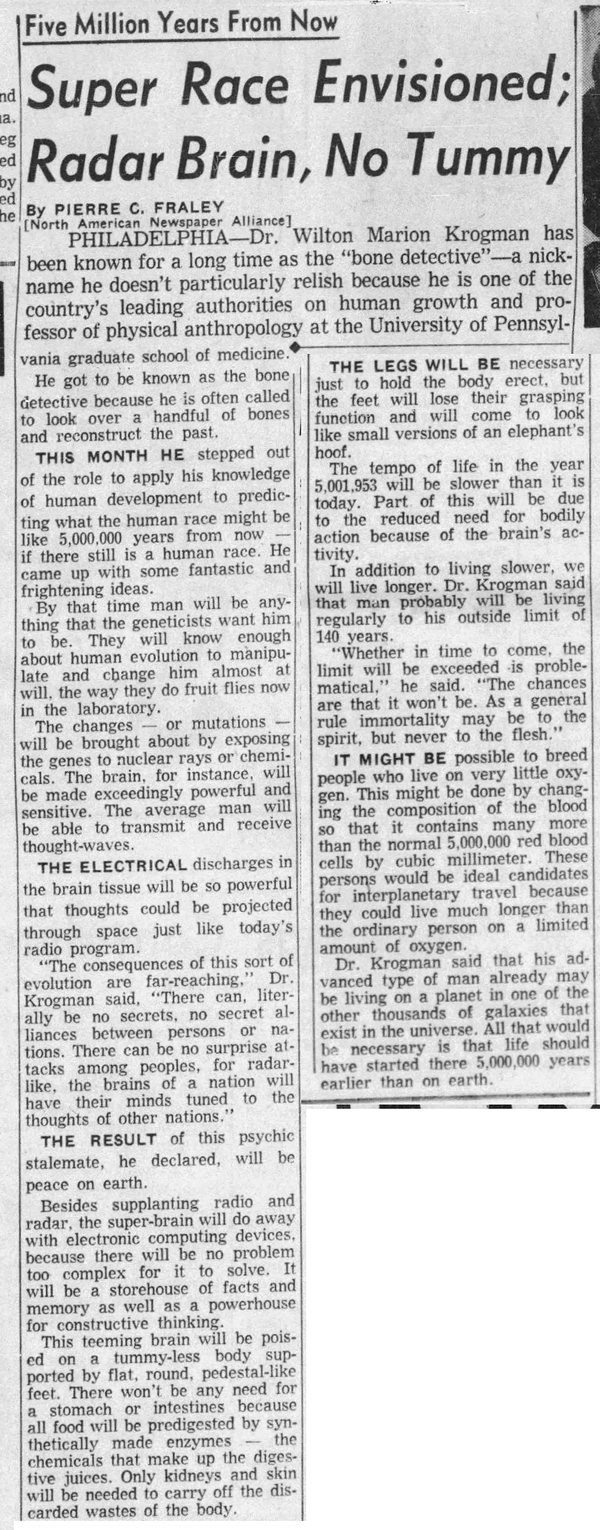
Calgary Herald - Oct 22, 1953
Posted By: Alex - Tue Oct 25, 2022 -
Comments (4)
Category: Anthropology, Science Fiction, 1950s, Yesterday’s Tomorrows
League of Exotic Dancers On Strike
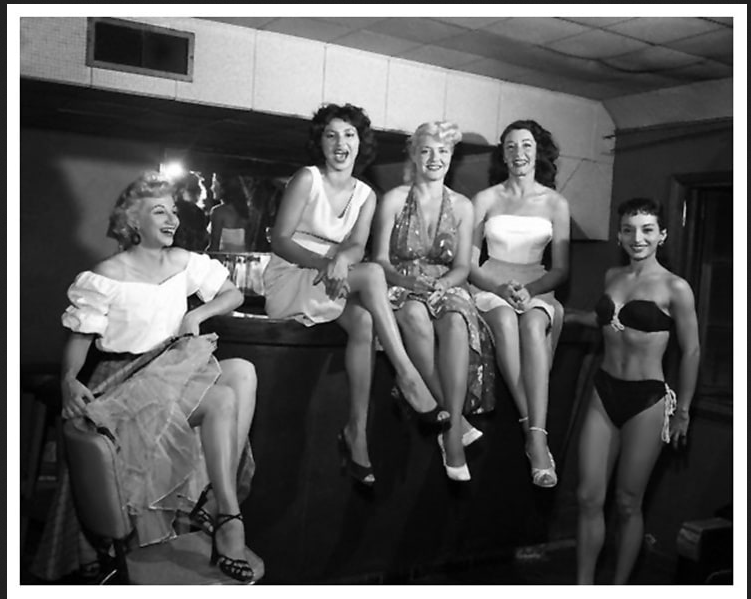
These Hollywood strippers, members of the League of Exotic Dancers, refuse to work because "the low wage scale of $95 at week" they receive when they take time off. They are (l-r): Champagne; Daurene Dare; Jennie "The Bazoom Girl" Lee, president of the league, Rusty Lane; and Novita.

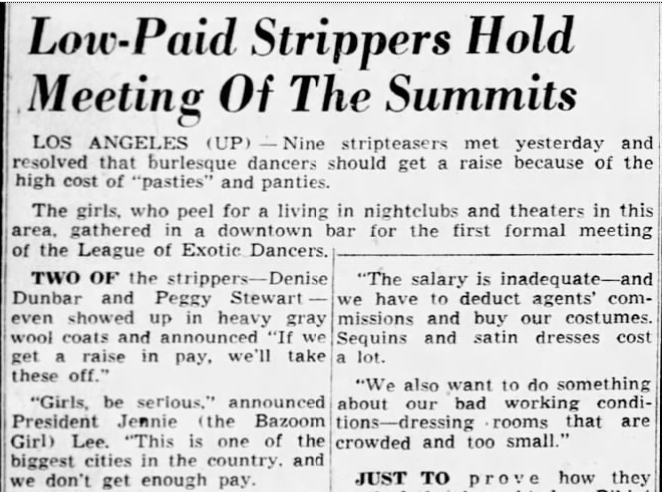
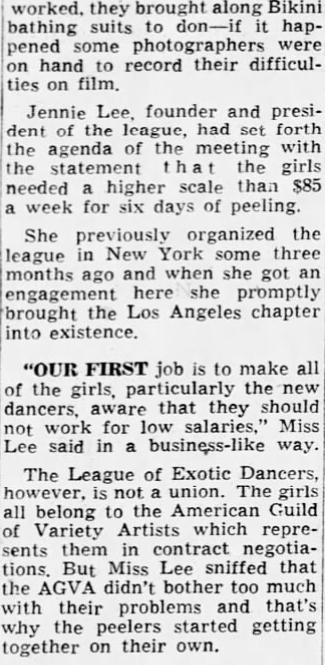
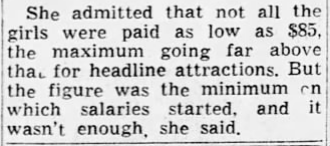
Posted By: Paul - Mon Oct 24, 2022 -
Comments (4)
Category: Entertainment, Dance, Tradesmen, Manual Laborers, and Skilled Workers, Burlesque, Exotic Dancing, Stripping and Other Forms of Staged Nakedness, Public Indecency, 1950s
Miss Voodoo
Stella Danfray, aka "Miss Voodoo," seemed poised to become a movie star when she arrived in the United States from France in 1950. She had all kinds of meetings lined up with Hollywood bigwigs.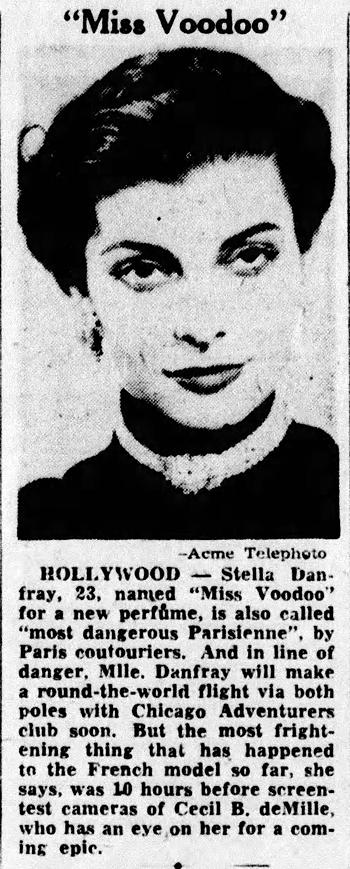
New Castle News - Jan 7, 1950

Source: Oklahoma Historical Society
But it turned out that Miss Voodoo had some peculiar views about marital relations. Unprompted, she told a reporter that she thought American husbands were browbeaten and should slap their wives.
I don't know if this comment ended her Hollywood career before it even began (as far as I can tell, she never appeared in any movies), but it definitely turned the American press against her. Within a few months she had left America. She continued working as a model in Europe for a number of years. I don't find any more references to her after 1955.
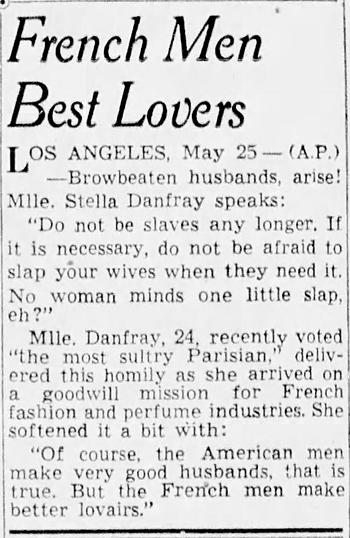
Montreal Daily Star - May 25, 1950
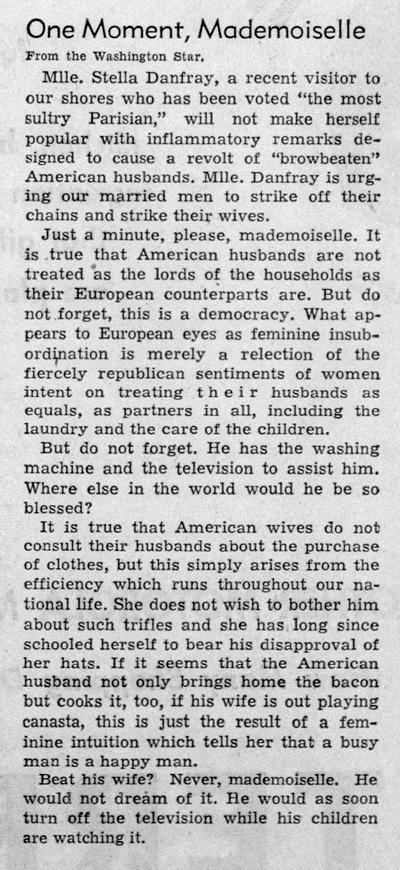
La Crosse Tribune - Sep 24, 1950
Posted By: Alex - Sun Oct 23, 2022 -
Comments (0)
Category: Awards, Prizes, Competitions and Contests, Husbands, Wives, Marriage, 1950s
Hi-Fi Addiction
Back in 1957, Dr. H. Angus Bowes argued that many Hi-Fi enthusiasts were, in fact, addicted to their music systems in an unhealthy way. I'm sure there are still people today who exhibit similar symptoms.One addict said he would not be satisfied until he could hear the drip of saliva from the French horns as they were emptied after a powerful brass passage, Dr. Bowes reported.
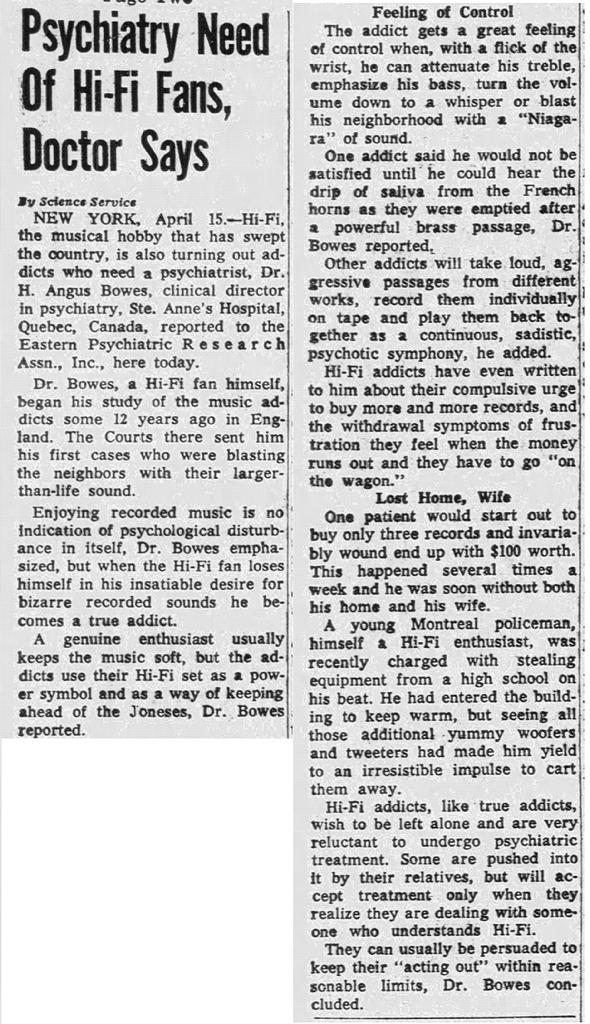
El Paso Herald-Post - Apr 15, 1957
Posted By: Alex - Wed Oct 19, 2022 -
Comments (2)
Category: Music, Psychology, 1950s
Script-Analyzer, the game
1957: Ideal Toy Co. came out with "Script-Analyzer," the game that promised to let kids psychoanalyze their parents through the magic of handwriting analysis.
NY Daily News - Mar 4, 1957

Vancouver Sun - Apr 2, 1957

"A handwriting game being analysed by members of the Ideal Toy panel on Inventor's Day at the Ideal Toy Company in Hollis, New York."

NY Daily News - Mar 5, 1956
Posted By: Alex - Sun Oct 16, 2022 -
Comments (0)
Category: Games, 1950s
Miss Esperanto
I have three references to this contest, from 1929, 1963 and 1967. No firm idea of how long it lasted, if it's still going on, or if it was held faithfully every year.
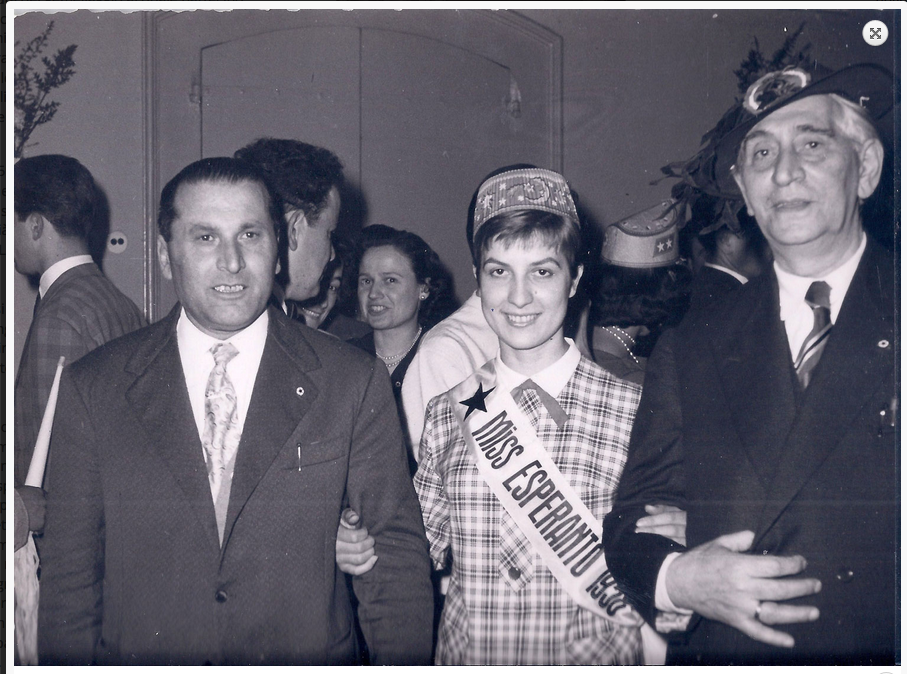

Puccini's opera 'La 66Bohème' was performed as a special performance for the Esperantists. Finally, Miss Maria Wenczel from Hungary was chosen as 'Miss Esperanto 1963'. Diethilde Magori from Germany and Helen Salmos from Sweden took second and third place in this competition. After the end of the congress, the young people drove to Sofija in a special caravan, where they were expected by the 48th Esperanto World Congress.

Posted By: Paul - Sun Oct 16, 2022 -
Comments (0)
Category: Awards, Prizes, Competitions and Contests, Beauty, Ugliness and Other Aesthetic Issues, Languages, 1920s, 1950s, 1960s
Symphony of the Birds
Jim Fassett, musical director at CBS Radio in the 1950s, took pre-recorded bird songs and arranged them into a three-movement "Symphony of the Birds." After its release in 1957, the record gradually acquired a following, largely due to being an early example of experimental music, but also because it was such an oddity. It was eventually reissued in 2006.Note: Discogs.org (and every other site I can find that discusses the album) says it was released in 1960, but newspapers and magazines were discussing its release in 1957.
More info: soundohm.com
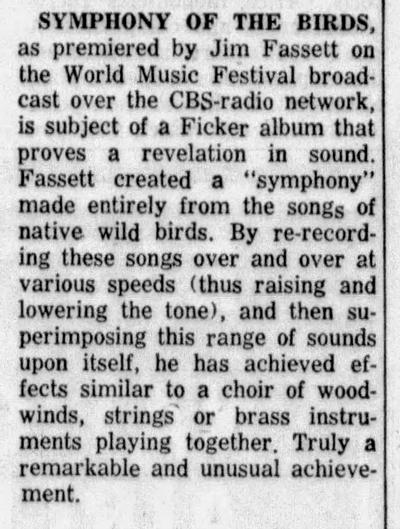
Tampa Bay Times - Apr 28, 1957
Posted By: Alex - Fri Oct 14, 2022 -
Comments (2)
Category: Music, 1950s
Papaya Mama
Posted By: Paul - Fri Oct 07, 2022 -
Comments (0)
Category: Music, Stereotypes and Cliches, 1950s, Caribbean
Weather Control Commission
In 1950, Senator Clinton P. Anderson of New Mexico introduced a bill in the Senate to create a federal "Weather Control Commission" modeled after the Atomic Energy Commission. Its purpose would be to regulate and license rainmaking activities in order to ensure the "equitable distribution of precipitation among the States." It would also study military applications of weather control.Anderson didn't get his Weather Control Commission, though in 1953 the federal government did create an Advisory Committee on Weather Control. And of course there are all those conspiracy theories alleging that the government is using the HAARP station up in Alaska to control the weather.
More info: Congressional Hearings, March 1951

Baltimore Sun - Dec 10, 1950
Posted By: Alex - Mon Oct 03, 2022 -
Comments (4)
Category: Government, 1950s, Weather

| Who We Are |
|---|
| Alex Boese Alex is the creator and curator of the Museum of Hoaxes. He's also the author of various weird, non-fiction, science-themed books such as Elephants on Acid and Psychedelic Apes. Paul Di Filippo Paul has been paid to put weird ideas into fictional form for over thirty years, in his career as a noted science fiction writer. He has recently begun blogging on many curious topics with three fellow writers at The Inferior 4+1. Contact Us |




